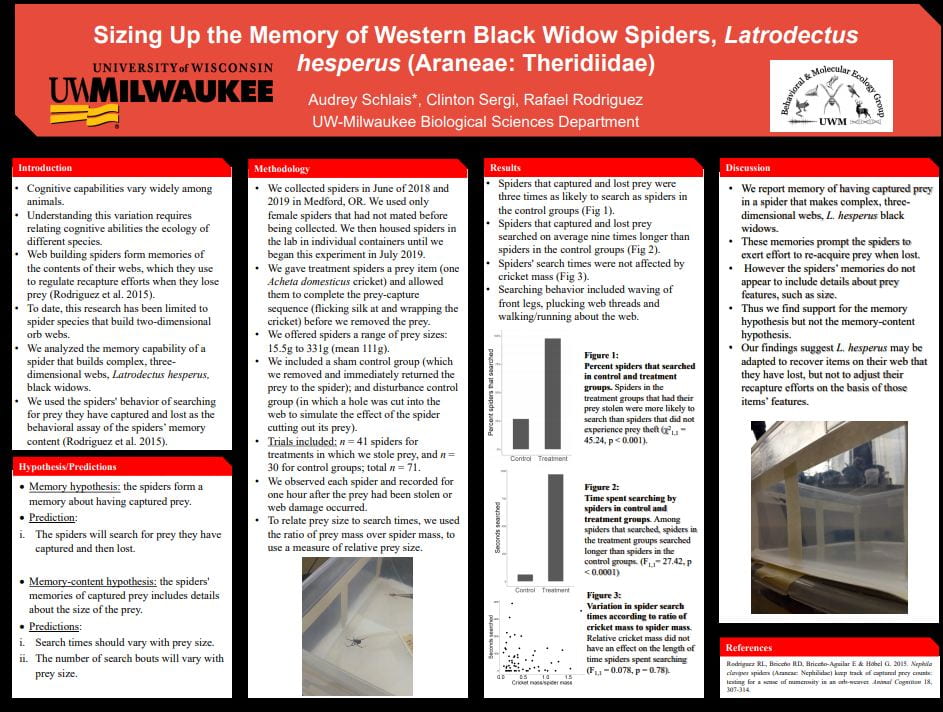Audrey Schlais, “Sizing Up the Memory of Western Black Widow Spiders, Latrodectus hesperus (Araneae: Theridiidae)”
Mentors: Rafael Rodríguez Sevilla & Clinton Sergi, Biological Sciences
The memory capabilities of animals vary according to their ecology and the limitations imposed by the size and architecture of their brains. Research on the memory of web spiders has been limited to species that build two-dimensional orb webs. I analyzed the memory capability of a spider that builds more complex, three-dimensional webs: the Western Black Widow Spider, Latrodectus hesperus. I first tested the hypothesis that L. hesperus form a memory about having captured prey. This hypothesis makes the prediction that the spiders will search for prey that they have captured and then lost. I then tested the hypothesis that L. hesperus memories of captured prey include details about the size of the prey. This hypothesis makes the prediction that search effort (e.g., search duration, search bouts) will vary with prey size. I offered L. hesperus spiders prey items of varying mass and then removed that prey after capture was complete. The control spiders either experienced damage to the web (holes equivalent to what the spiders create when removing prey from the web), or no damage to the web, and were left to consume the prey after capture. I will discuss the results in terms of spiders’ ability to retain memories about lost prey in relation to prey size and/or value.
Click the thumbnail below to open the full sized poster in a new tab.

Hello Audrey,
Really great work! I gave you top marks for content & clarity, effectiveness of presentation, and interpretation of results. One question: why collect only female spiders who had not yet mated?
Best wishes for your future research!
Hi Julie,
Collection of spiders which had not yet mated was mostly to keep better track of their age and to house them for further analysis for as long as possible. Most spiders used were collected the season after they first reached sexual maturity, being at about 90 days old, which is ideal given the spiders have a lifespan of about 1.5 years.